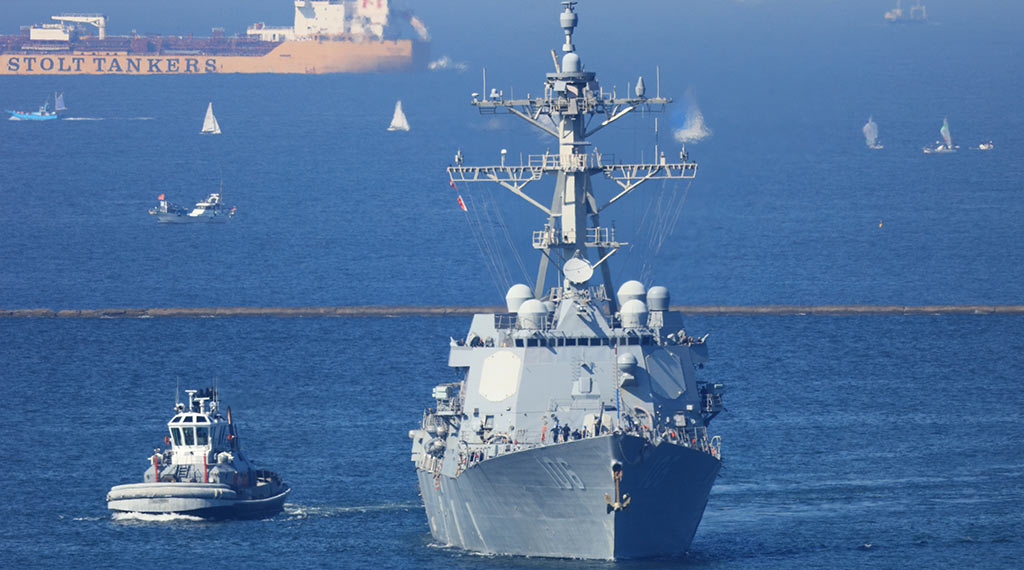Two plus two declaration defines a more robust strategic relationship between Japan and the US

‘Two plus two’ declaration defines more robust strategic ties and could pave way for common command structure against China
During the previous Cold War a number of Soviet Union experts, then known as Kremlinologists, would look for clues as to who was actually running the show in the USSR.
One of the techniques was to see who stood on the Kremlin wall above the Lenin Mausoleum and where they were positioned. From this, the “experts” would deduce who was rising in the Communist hierarchy, who was losing ground and who wasn’t even there.
There are occasions when reading diplomatic documents where similar techniques are needed to make sense of the words put on paper. On January 7, a “two plus two” high-level meeting of foreign and defense ministers was held between Japan and the United States.
The virtual meeting was attended by Secretary of State Antony Blinken, Defense Secretary Lloyd Austin, Japanese Foreign Minister Yoshimasa Hayashi and Japanese Defense Minister Nobuo Kishi. The new US ambassador to Japan, Rahm Emanuel, also took part.
The ministers released a statement that goes into considerable detail on what was agreed, although there remain some missing parts. Luckily, the joint document does not need the equivalent of Kremlinologists to ascertain that significant progress was made at the meeting.
It’s clear that Japan and the US significantly upscaled their defense relationship, focused clearly on the China threat and, between the lines, worked on ways to block China’s efforts to challenge Japan’s sovereignty over the southern Senkaku islands and to improve their joint capability to support Taiwan militarily.
According to Nikkei Asia, the US and Japan “committed to increasing joint or shared use of US and Japanese facilities, ‘including efforts to strengthen Japan Self-Defense Forces’ posture in areas including its southwestern islands …”
That assessment is borne out by the two sides’ Joint Statement and more. Nikkei Asia correctly identified the island of Yonaguni as the most critical because of its proximity to Taiwan.
Strong language
The Joint Statement contains strong language about defense cooperation. Here are some highlights where “They” refers to the “two plus two” ministers:
* They noted the need to augment security cooperation and capacity-building initiatives with partners in Southeast Asia and Pacific Island countries.
* The United States and Japan resolved to ensure alignment of Alliance visions and priorities through key forthcoming national security strategy documents. Through its strategic review process, Japan expressed its resolve to examine all options necessary for national defense including capabilities to counter missile threats.
* Japan and the United States underscored the need to closely coordinate throughout this process and welcomed our robust progress on evolving Alliance roles, missions, and capabilities, and on bilateral planning for contingencies.
* The Ministers underscored the critical importance of strengthened cross-domain capabilities, particularly integrating the land, maritime, air, missile defense, space, cyber, electromagnetic spectrum and other domains.
* Stressing the need to advance readiness, resiliency and interoperability, they welcomed the deepening of cooperation, including asset protection missions and joint intelligence, surveillance and reconnaissance operations, and realistic training and exercises, as well as flexible deterrent options and strategic messaging.
* They also committed to increase joint/shared use of US and Japanese facilities, including efforts to strengthen Japan Self-Defense Forces’ posture in areas including its southwestern islands.
* They concurred on deepening cooperation on space domain awareness, mission assurance, interoperability and joint responses to serious threats to, from and within space, including by continuing discussion on proliferated low earth orbit satellite constellations.
* The Ministers committed to pursue joint investments that accelerate innovation and ensure the Alliance maintains its technological edge in critical and emerging fields, including artificial intelligence, machine learning, directed energy and quantum computing.
* The Ministers concurred to conduct a joint analysis focused on future cooperation in counter-hypersonic technology.
* They stressed collaboration on streamlined procurement and resilient defense supply chains.
* Through its strategic review process, Japan expressed its resolve to examine all options necessary for national defense including capabilities to counter missile threats.
Click HERE to read more.
- Israel’s attack on Iran: What we know so far - April 23, 2024
- Apply Israel-Iran lessons to Taiwan - April 18, 2024
- Rethinking tanks on the modern battlefield - April 12, 2024
